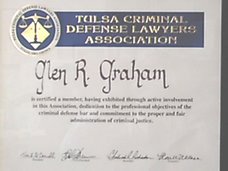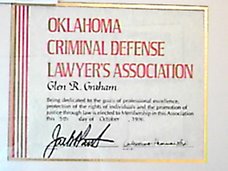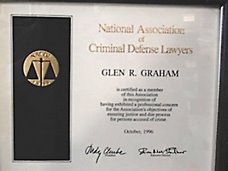False or Mistaken Identification Account for 75% of DNA Over-Turned Convictions
According to the Innocence Project (http://www.innocence.org) and numerous large civil verdicts (some in the millions) for wrongful convictions, eyewitness misidentification is the single greatest cause of wrongful convictions nationwide, playing a role in more than 75% of convictions overturned through DNA testing. While eyewitness testimony can be persuasive evidence, 30 years of strong social science research has proven that eyewitness identification is often unreliable. Research shows that the human mind is not like a tape recorder; we neither record events exactly as we see them, nor recall them like a tape that has been rewound. Instead, witness memory is like any other evidence at a crime scene; it must be preserved carefully and retrieved methodically, or it can be contaminated.
The innocence projects suggests blind administration, whereby the administering officer is not aware who the suspect is or whether they are present or not and the witness is told the suspect may or may not be one of them.
In more than 25% of DNA exoneration cases, innocent defendants made incriminating statements, delivered outright confessions or pled guilty. These cases show that confessions are not always prompted by internal knowledge or actual guilt, but are sometimes motivated by external influences. Mentally capable adults also give false confessions due to a variety of factors like the length of interrogation, exhaustion or a belief that they can be released after confessing and prove their innocence later. Regardless of the age, capacity or state of the confessor, what they often have in common is a decision – at some point during the interrogation process – that confessing will be more beneficial to them than continuing to maintain their innocence.
In more than 15% of cases of wrongful conviction overturned by DNA testing, an informant or jailhouse snitch testified against the defendant. Often, statements from people with incentives to testify – particularly incentives that are not disclosed to the jury – are the central evidence in convicting an innocent person.
For centuries, scientific and pseudo-scientific evidence has been used in courts of law. From blood typing and hair comparison to bite marks and ballistics, many questionable and limited forms of science and technical evidence have been – and still are – used to convict defendants in the United States. Evidence that would traditionally call for comparisons of hair, bite marks and blood types can now be tested for DNA. While older forms of forensic sciences can narrow possibilities, DNA can provide definitive proof of innocence or guilt. Because of its power to conclusively reveal the truth, DNA testing should be used whenever it can be probative. DNA exonerations have exposed misconduct at every level and stage of a criminal investigation.
This misconduct has included:
· deliberate suggestiveness in identification procedures
· the withholding of evidence from defense
· the deliberate mishandling, mistreatment or destruction of evidence
· the existence of false confessions
· the use of unreliable government informants or snitches
Oklahoma law requires the court to insure that the defendant receives a fair and accurate identification procedure and to exercise its discretion in such a way to accomplish those ends. Hunt v. State, 1988 OK CR 38, 751 P.2d 747.
In Davis v. State, 1970 OK CR 44, 467 P.2d 521, the court determined that if a timely objection is made to a potential in-court identification, the court should conduct a hearing outside the presence of a jury in order to determine if the extrajudicial identification procedure complies with the holding in United States v. Wade, 388 U.S. 218, 87 S.Ct. 1926, 18 L.Ed.2d 1149 (1967), and Simmons v. United States, 390 U.S. 377, 88 S.Ct. 967, 19 L.Ed.2d 1247 (1968). Those procedures required the court to determine (1) the opportunity of the witness to view the criminal at the time of the crime, (2) the witness’ degree of attention, (3) the accuracy of his prior description of the criminal, (4) the level of certainty demonstrated at the confrontation, and (5) the time between the crime and confrontation. Manson v. Brathwaite, 432 U.S. 98, 97 S.Ct. 2243, 53 L.Ed.2d 140 (1977); Chatman v. State, 1986 OK CR 36, 716 P.2d 258, 259; Bennett v. State, 1982 OK CR 125, 649 P.2d 804; and, Reeves v. State, 1982 OK CR 119, 649 P.2d 780, 783.
The United States Supreme Court and many circuit courts have long held that one-person show ups or one-person photo show ups produce a great likelihood of misidentification and any in-court identification must be shown to be the product solely of the independent recollection of the identification at the time of the offense, and not the result of the suggestive one-person show up or one-person photo show up or some other unnecessarily suggestive procedure.
The Innocence Project (http://www.innocence.org) suggests the following reforms:
Blind administration: Research and experience have shown that the risk of misidentification is sharply reduced if the police officer administering a photo or live lineup is not aware who the suspect is.
Lineup composition: "Fillers” (the non-suspects included in a lineup) should resemble the eyewitness' description of the perpetrator. The suspect should not stand out (for example, he should not be the only member of his race in the lineup, or the only one with facial hair). Eyewitnesses should not view multiple lineups with the same suspect
Instructions: The person viewing a lineup should be told that the perpetrator may not be in the lineup. They should also be told not to look to the administrator for guidance.
Confidence Statements: Immediately following the lineup procedure, the eyewitness should provide a statement, in his own words, that articulates the level of confidence he has in the identification made.
Recording: Identification procedures should be videotaped whenever possible – this protects innocent suspects from any misconduct by the lineup administrator, and it helps the police and prosecution by showing a jury that the procedure was legitimate.
Sequential Lineups: Research has shown that presenting lineup members one-by-one (sequential), rather than all at once (simultaneous), decreases the rate at which innocent people are identified. Research has also demonstrated that when viewing several subjects at once, witnesses tend to choose the person who looks the most like – but may not actually be – the perpetrator.






No comments:
Post a Comment